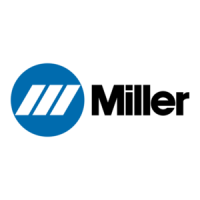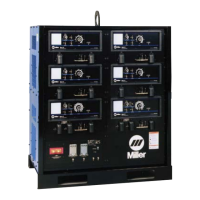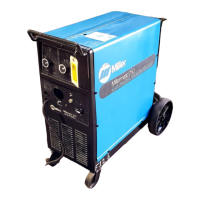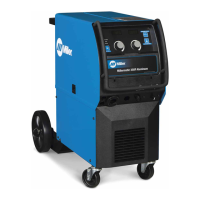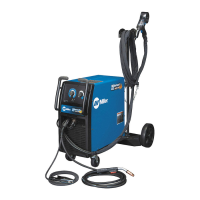Do you have a question about the Miller Electric Metro 250D and is the answer not in the manual?
Explains safety symbols and their meanings, including warning and note indicators.
Discusses dangers like electric shock, arc rays, fumes, and gases during arc welding.
Covers fuel hazards, hot parts, noise, magnetic fields, and cylinder dangers associated with the engine.
Explains symbols related to falling units, flying sparks, overheating, static discharge, and tilting.
Discusses interference from high-frequency radiation with electronic equipment.
Discusses electromagnetic interference from arc welding with sensitive electronics.
Lists relevant safety standards and codes for welding and cutting.
Provides information on EMF effects and reduction in the workplace.
Lists and defines various symbols used in the manual for controls and indicators.
Summarizes key safety warnings with visual aids for hazards and precautions.
Details warnings and instructions related to battery charging procedures.
Highlights hazards associated with moving parts like fans and rotors.
Warns about hot muffler and exhaust pipes causing burns.
Provides warnings and instructions regarding diesel fuel handling and safety.
Warns about hazards and proper procedures for lifting and moving equipment.
Guides on unit removal, manual reading, fuel fill, oil check, and initial operation limits.
Warns against using ether as a starting aid due to engine damage.
Displays the machine's technical specifications, ratings, and classifications.
Details output, range, voltage, auxiliary power, engine, fuel, and sound level.
Provides physical dimensions, weight, and safe operating angle limits.
Illustrates the generator's voltage and amperage output capabilities.
Presents charts showing fuel usage based on load and output.
Explains duty cycle percentages and overheating prevention.
Covers generator placement, movement, airflow clearance, and grounding.
Details battery connection and optional exhaust pipe installation.
Outlines daily checks for fluids, oil level, and initial load limits.
Explains how to connect cables to the positive and negative output terminals.
Provides a chart to determine appropriate weld cable sizes based on amperage and circuit length.
Describes the function and pinout of the Remote 14 Receptacle.
Explains the function of each control on the front panel.
Details how to use remote controls for amperage and contactor functions.
Identifies receptacles, circuit breakers, and GFCI protection for auxiliary power.
Provides a schedule for regular maintenance tasks based on operating hours.
Step-by-step guide for changing engine oil and filter.
Instructions for replacing primary and secondary fuel filters.
Details on cleaning or replacing the air filter element and dust valve.
Guide on setting idle and weld/power speeds using a tachometer.
Explains the function of fuses and circuit breakers for overload protection.
Instructions for cleaning the spark arrestor.
Lists common welding output problems and their remedies.
Addresses issues with auxiliary power output and receptacle functionality.
Lists common engine starting and running problems and their solutions.
Explains wetstacking and its causes during engine break-in.
Details the process for running in the unit using a load bank.
Outlines the procedure for running in the unit using a resistance grid.
Guidance on choosing auxiliary equipment and proper plug types.
Instructions for grounding the generator to a vehicle frame.
Procedures for grounding the generator when supplying power to building systems.
Explains how to calculate power requirements for resistive and non-resistive loads.
Lists power requirements for various industrial motors.
Lists power requirements for farm and home equipment.
Lists power requirements for various contractor equipment.
Explains how to determine starting amperage for motors.
Guidelines on generator load limits and motor starting rules.
Illustrates typical wiring for standby power supply.
Provides charts for selecting appropriate extension cords based on load and length.
Exploded view and part numbers for the main assembly.
Lists components and parts for the front panel assembly.
Exploded view and part numbers for the generator assembly.
Lists components and parts for the control box assembly.
Lists optional kits and accessories for the Metro 250D model.
| Brand | Miller Electric |
|---|---|
| Model | Metro 250D |
| Category | Welding System |
| Language | English |
